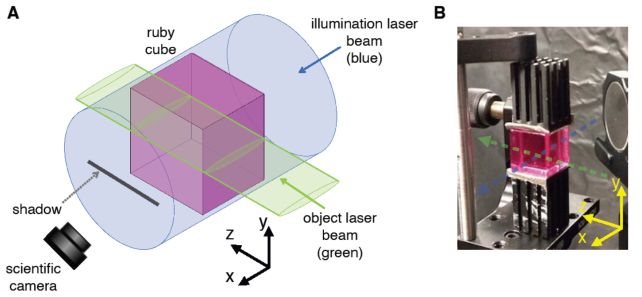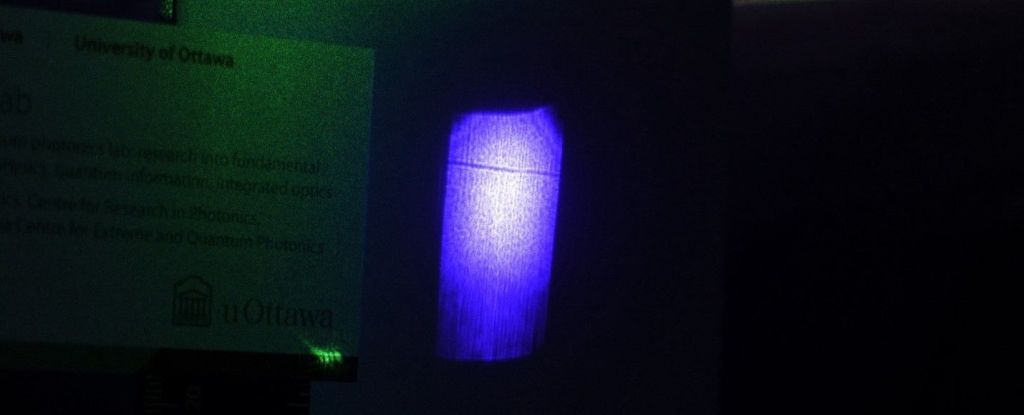Shadows are a natural consequence of opaque walls in an illuminated Universe.
Light shines; photons travel until they hit an object through which they cannot pass; this blockage creates a shadow, a little piece of darkness where the light has been impeded.
Physicists, however, have just discovered something very peculiar. A laser passing through the right transparent material can force its surroundings to turn opaque, almost as if it casts its own shadow.
When two beams of laser light are crossed in just the right way, the primary beam is unable to pass through the secondary – creating a shadowed line in the light that hits the opposite surface.
“Our demonstration of a very counter-intuitive optical effect invites us to reconsider our notion of shadow,” says physicist Raphael Abrahão of Brookhaven National Laboratory in the US.
Except under very particular circumstances, photons don’t interact with one another, with intersecting waves passing right through unimpeded.
If you cross two beams, they’ll pass through each other as though nothing is there – like shining one flashlight beam through another.
Abrahão and his colleagues thought to investigate whether a beam of light can cast a shadow almost as a side project. They had been studying how beams of light interact when nonlinear materials are introduced. These are materials whose interactions with light do not scale in a linear fashion, resulting in effects such as amplification, absorption, self-focusing, and harmonics (or frequency replication).
They were using 3D modeling software to generate simple schematics for their experiments. In this software, the beam of light was represented as a solid cylinder that cast a shadow, and the physicists found that pretty funny… until they found it interesting.
“What started as a funny discussion over lunch led to a conversation on the physics of lasers and the nonlinear optical response of materials,” Abrahão says. “From there, we decided to conduct an experiment to demonstrate the shadow of a laser beam.”
Ruby is a popular material for studying non-linear optics, so the researchers used one as the meeting point for their two lasers, one blue and one green.
The blue laser light was directed at one side of the ruby, where it passed through and cast a cool glow upon a screen, while a narrow beam of green laser light passed perpendicular to the first from another.

Wherever the thin line of green light fell on the ruby’s molecules, a complex dance of electrons rising and falling occurred. As a consequence, the slightly shorter wavelength of blue light was befuddled by the transitioning electrons, its path through the otherwise translucent material blocked.
The green laser beam therefore behaves like an object, creating a dark line in the blue light that lands on a screen on the other side of the ruby.
This dark line met all the criteria to be classified as a shadow. It was visible to the naked eye; conformed to the contours of the screen it was cast on; and moved with the green laser beam when the laser source was moved.
“This discovery expands our understanding of light-matter interactions and opens up new possibilities for utilizing light in ways we hadn’t considered before,” Abrahão says.
“Our understanding of shadows has developed hand-in-hand with our understanding of light and optics. This new finding could prove useful in various applications such as optical switching, devices in which light controls the presence of another light, or technologies that require precise control of light transmission, like high-power lasers.”
The research has been accepted for publication in Optica, and can be found on the pre-publish site arXiv.





